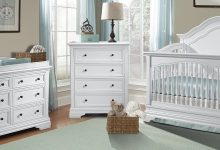Dealing with a Clogged Sink: Causes, Solutions, and Prevention

A clogged sink is a common household nuisance that can disrupt daily routines and cause inconvenience. Whether it’s in the kitchen, bathroom, or laundry room, a clogged sink can lead to slow drainage, foul odors, and even water damage if left untreated. In this comprehensive guide, we’ll explore the causes of clogged sinks, effective solutions to unclog them, and preventive measures to avoid future blockages.
Understanding the Causes of Clogged Sinks
Accumulation of Food Debris
In kitchen sinks, the accumulation of food debris, grease, and oil can quickly lead to clogs. Food particles can get stuck in the drain, gradually building up and obstructing water flow.
Hair and Soap Scum Buildup
Bathroom sinks are prone to clogs caused by hair, soap scum, and toothpaste residue. Over time, these substances can accumulate in the drain, forming a stubborn blockage that restricts water flow.
Mineral Deposits and Hard Water
In areas with hard water, mineral deposits such as calcium and magnesium can accumulate inside the pipes, narrowing the diameter of the drain and causing clogs.
Foreign Objects
Sometimes, small objects such as jewelry, bottle caps, or children’s toys can accidentally fall into the sink drain, causing blockages.
Effective Solutions for Unclogging Sinks
Boiling Water
Pouring boiling water down the drain can help dissolve and dislodge minor clogs caused by grease or soap scum buildup. Repeat this process several times if necessary.
Baking Soda and Vinegar
A mixture of baking soda and vinegar is a natural and effective way to break down organic matter and clear clogs. Pour a cup of baking soda followed by a cup of vinegar down the drain, and let it sit for about 30 minutes before flushing with hot water.
Plunging
Using a plunger can help dislodge stubborn clogs by creating pressure and forcing the blockage to move. Make sure to cover the overflow opening (if present) before plunging to create a tight seal.
Plumbing Snake or Auger
For more severe clogs, a plumbing snake or auger can be used to manually remove the blockage. Insert the snake into the drain and rotate it until you encounter resistance, then crank the handle to break up the clog.
Chemical Drain Cleaners
Commercial drain cleaners can be effective for clearing tough clogs, but they should be used with caution as they contain harsh chemicals that can damage pipes and harm the environment. Follow the manufacturer’s instructions carefully and wear protective gear when handling these products.
Preventive Measures to Avoid Clogged Sinks
Dispose of Food Properly
Avoid dumping large quantities of food scraps, grease, or oil down the clogged sink. Instead, scrape food debris into the trash or compost bin before washing dishes.
Use Sink Strainers
Install sink strainers or stoppers in kitchen and bathroom sinks to catch hair, food particles, and other debris before they enter the drain.
Regular Maintenance
Perform routine maintenance on your sinks by flushing them with hot water and vinegar once a month to prevent the buildup of grease, soap scum, and mineral deposits.
Avoid Harsh Chemicals
Refrain from using harsh chemical drain cleaners on a regular basis, as they can corrode pipes and cause more harm than good. Instead, opt for natural alternatives like baking soda and vinegar whenever possible.
Professional Inspections
Schedule periodic inspections by a licensed plumber to check for any underlying issues with your plumbing system and address them before they escalate into major problems.
Conclusion
Dealing with a clogged sink can be a frustrating experience, but with the right knowledge and tools, it’s a problem that can be easily resolved. By understanding the common causes of clogged sinks, employing effective unclogging methods, and implementing preventive measures, you can keep your sinks flowing smoothly and avoid the hassle of dealing with clogs in the future. Remember to practice proper maintenance and seek professional help when needed to ensure the long-term health and functionality of your plumbing system.








